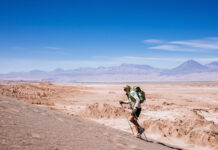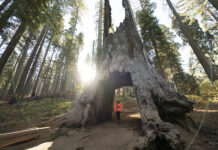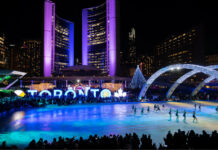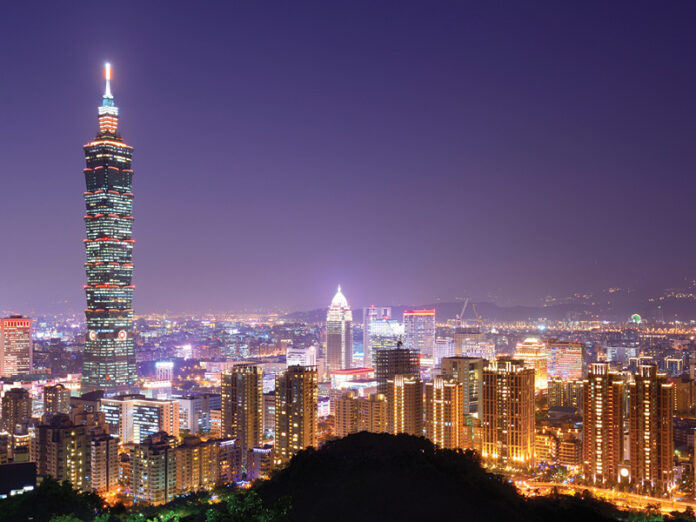
It’s Friday after school and the gym at Hong Doa Junior High in Taipei is filled with students in yellow and blue gym strip, skipping ropes in a ballet of precision and aerobic endurance. They have been waiting for a guest from Canada to demonstrate a routine they will perform at the upcoming city championship.
With traditional Chinese music as the soundtrack for the 14-minute routine, a platoon of skippers twirls ropes into an ever-twisting, intertwined web that miraculously never tangles. Triumphant at the conclusion, the gleeful children bow to their coach, then, with graciousness and giggling English, they thank their new friend for his presence.
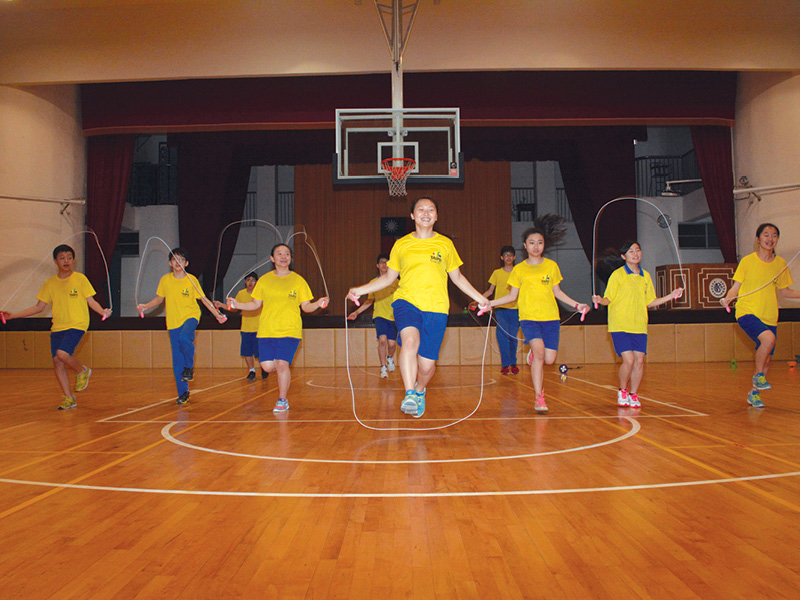
Photo: Chris Welner
Taiwan is a country on the move. From school children running track relays to modern fitness clubs and seniors doing calisthenics in parks, the Republic of China is getting active. Sport has been part of its culture for 4,000 years, with traditional games such as diabolo (juggling tricks with hourglass shaped cones balanced on a string attached to two sticks) and spin top (where a wooden top is thrown and caught on a spoon held in the receiver’s teeth) still surviving on this strategic island 150K east of Mainland China. Meditative martial arts like tai chi are practiced in city parks and plazas, while there is a growing culture of cyclists, runners and fitness club devotees. A staggering 500,000 members have signed up at a relatively modest 185 fitness clubs in Taiwan. That’s more than 3,000 members per club.
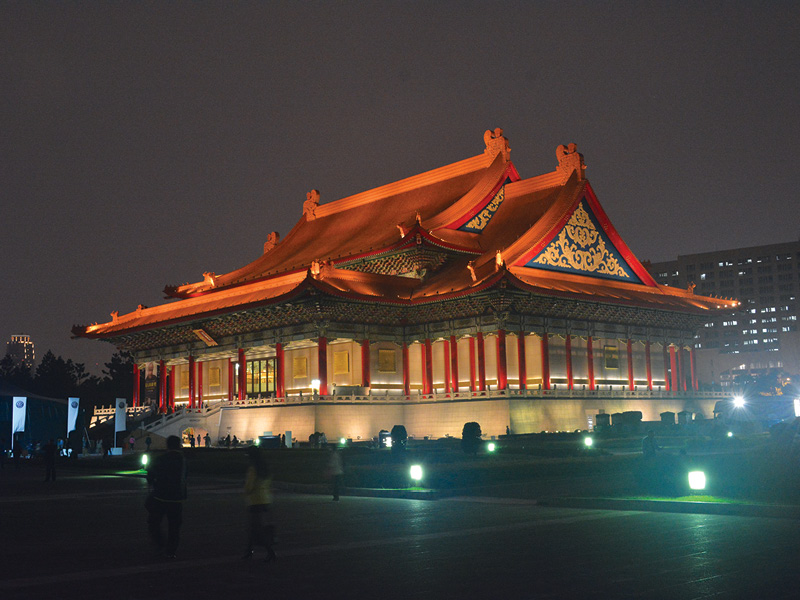
Photo: Kenji Sugata
“From the government to the individual, health is on top of everybody’s mind,” says Catherine Wang of the Taiwan Sporting Goods Association. “Twenty years ago people were so busy at their job. Now we start to think about our priorities. Now we cycle. Schools are open for running, 10,000 people sign up to run our marathon. Even 10 or 20 years ago, that would not happen.”

Photo: Chris Welner
Politics can’t be discounted as a factor in the modern rise of individual sport and fitness. Taiwan has shaped itself into the world’s 18th largest free-market economy, one in which only 1.5 per cent of the population lives below the poverty line. (In Canada, 7 per cent live below the poverty line.)
Taiwan’s turbulent past has seen the island exchanged like a poker chip at a card table, falling under occupation at various times in its history by the Portuguese, Dutch and French. Taiwan offers up 1912 as the year it became a democratic republic, but it was occupied through the first half of the 20th century by Japan, which, in turn, ceded the territory to China as part of reparations after the Second World War. China’s ruling Koumintang Party retreated to govern from Taiwan after the 1949 civil war and ruled the island for the next 40 years in a virtual one-party state. It created a relationship with China that is, let’s say, complicated. Each still claims degrees of sovereignty over the other, but in reality they exist as independent nations with economic and cultural ties amid a political atmosphere that ranges from chilly to lukewarm. China’s objections are, in large part, the reason Taiwan is still not recognized as a member of the United Nations, and for years was not recognized as an Olympic nation.
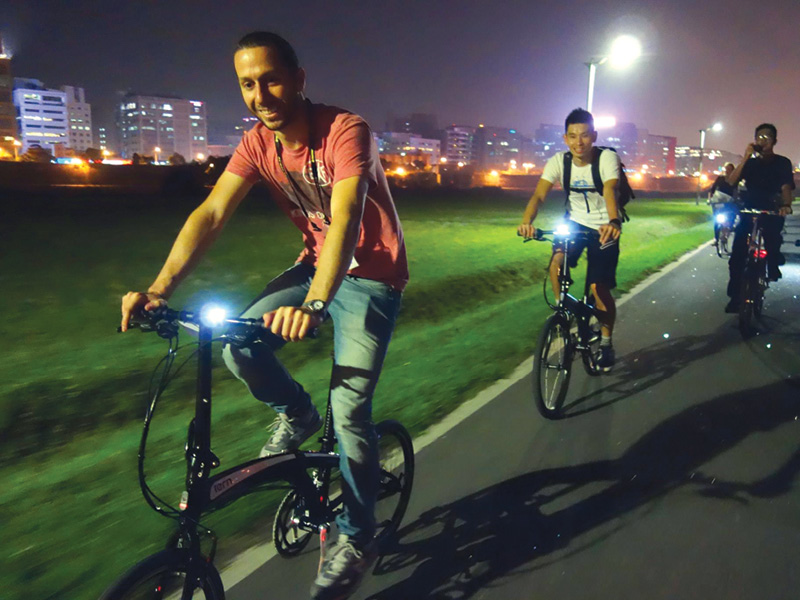
Photo: Kenji Sugata
Explore Taiwan
- Also known as: Republic of China, Chinese Taipei, formerly Formosa, as named by the Portuguese and meaning “Beautiful Island”
- Population: 23 million
- Capital City: Taipei (2.7 million)
- Language: Mandarin and Taiwanese
- Taipei is scheduled to host the 2017 World University Games. A giant new multi-million dollar domed stadium is being built for the event, amid much controversy.
- Baseball is Taiwan’s national sport. Its youth baseball teams have won 17 Little League World Series. Youth baseball is commemorated on the $500NT bill.
- Film director Ang Lee is from Taiwan, where he made Crouching Tiger, Hidden Dragon
Taiwan’s influence internationally is strongest felt as a Far East trade centre and hub of manufacturing; building thousands of products the rest of the world consumes by the container load. Once an export mill for cheap goods that flooded North America and Europe, Taiwan has refined its manufacturing expertise and turned away from bargain basement pricing to focus on product excellence. The result is an industry that manufactures 90 per cent of the world’s fitness equipment and exports more than 4 million bicycles a year, including high-end frames and components for all measure of bikes — from road racers to fat bikes and city bikes that fold into compact packages to go just about anywhere. Elite performance brand Giant and city bike leader Tern are among those with headquarters in Taiwan.
Taipei Cycle has become one of the world’s signature cycling trade shows. For the first time this year, the cycling expo combined marketing forces with TaiSpo, an emerging fitness equipment trade show held in spring, where manufacturers show off new designs and innovation. Both shows bring together more than 1,400 exhibitors. Taipei Cycle is out to compete with the likes of Interbike in Las Vegas and Eurobike in Germany, signalling to bicycle designers that its manufacturers can create and fabricate just about anything the sport performance world desires: from wheels and gears, to saddles, frames and chain rings.
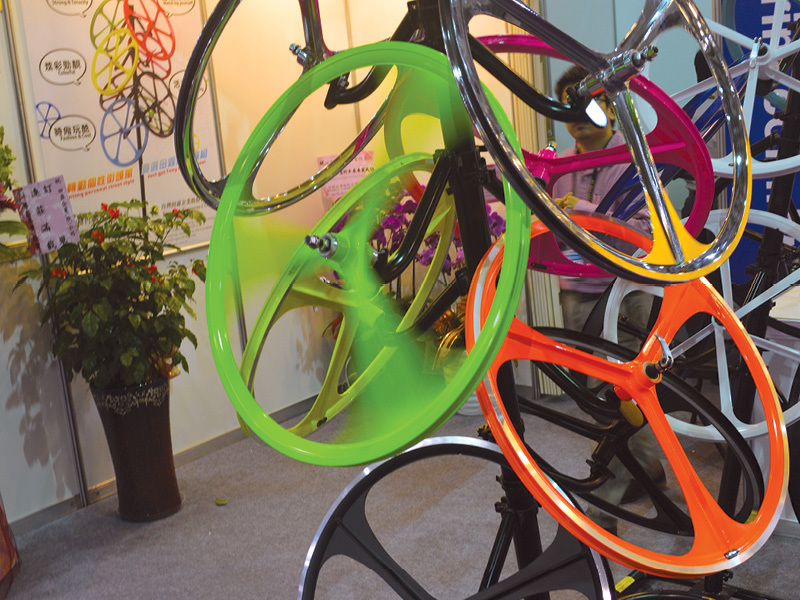
Photo: Chris Welner
Innovation can be seen in the lineup of fitness equipment made for export, from power racks and cardio machines to specialty devices for every demographic. Fitnex lays claim to making the world’s first kid-sized cardio equipment — smaller versions of spin bikes, elipticals and treadmills built to the same specs as their adult equipment. Among the offerings at the not-so-creatively named Alex and Dave are gym racks built specifically for seniors or women. Taichung’s Johnson Health Tech, under its brands Matrix, Vision and Horizon, shipped more treadmills and spin bikes around the world than any other manufacturer.
TaiSpo is the sector’s younger cousin, drawing 22,000 visitors in its three-day run this spring, including media hosted from France, Korea, Japan and Canada. The shows are significant enough that Taiwan’s president Ma Ying-jeou officiated at the opening ceremonies.
Maybe that shouldn’t be surprising when you consider the capital city’s iconic landmark is a giant stair climber — the 86-storey Taipei 101 World Trade Centre. It takes 2,046 steps to march to the top of the world’s fourth tallest building. Annual stair climb races attract thousands of runners, including Peng-Hung-nien, a 96-year-old man who has finished the vertical trek for nine consecutive years.
All this means the label “Made in Taiwan” — once something to avoid — today is a badge of honour.
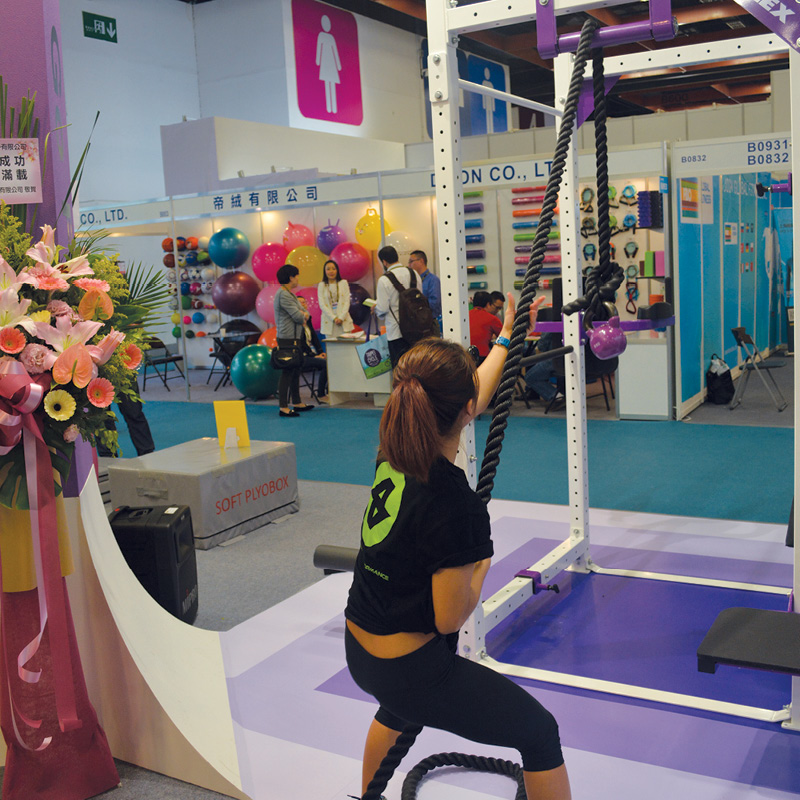
Photo: Chris Welner
“There is a global trend that sees a lot of attention paid to fitness and a healthy lifestyle. People make exercise anytime, anywhere they want,” says Antony Lo, chairman of the Taiwan Bicycle Association. “Ten years ago, people said Taiwan was a desert for cycling and now it’s a paradise. We want to make the island a bike kingdom.”
At the heart of every kingdom is its devotees. Competitive cyclists have events such as the Tour de Taiwan, a five-day stage race on the UCI Asian circuit; Taiwan KOM, described as a “breathtakingly beautiful yet incredibly tough” race, attracts cyclists from around the world for the 105K ride from the Pacific Ocean coast to the summit of Wuling Mountain, climbing 3,275 metres along the way. If cycling tours are more your thing, Bicycle Adventures and Grasshopper Adventures are two companies that stage multi-day tours riding 50K to 100K a day along the island’s coastal roads.
The drawback here is air thick with pollution that wafts from the mainland and settles in Taiwan’s towns and cities nestled in mountain valleys. It takes an afternoon shower to wash the gritty air in time for an evening ride along the Danshui River. I am with about 75 riders making our way 20K along the paved cyclepath, just a sliver of the country’s 4,700K of bike trails. We roll past colourfully lit bridges, ball fields, tennis courts and parks, all bustling with people.
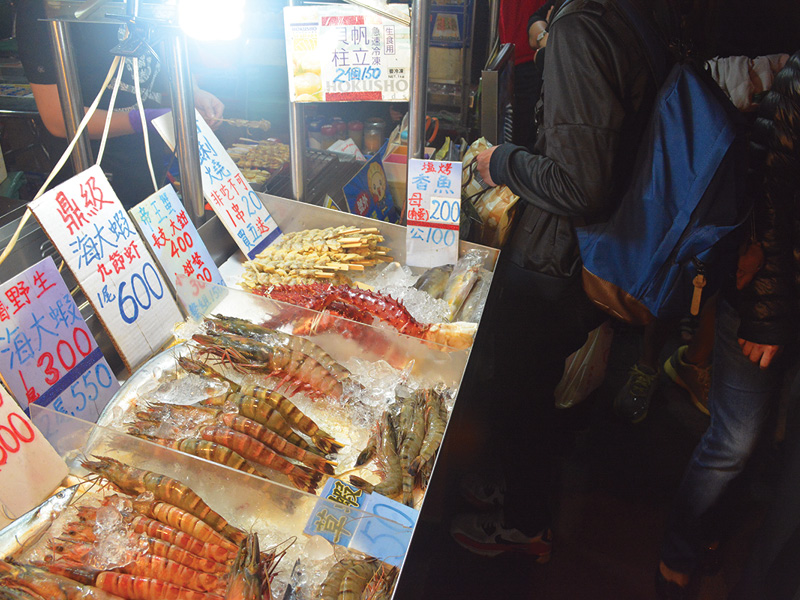
Photo: Chris Welner
On Friday evening the activity is less physical and more gastronomic. Night markets bring crowds to side streets filled with carts of giant shrimp, exotic fruits, mystery food on sticks and in bowls that is shared from hand to hand.
The sharing is a mark of the incredible friendliness of Taiwan’s people. Here are a couple of other examples. On a sightseeing train trip, I was having a hard time finding my destination (note to self: work on Mandarin). A young schoolteacher followed me off the train and took the time to accompany me back to the transfer station I had missed before returning on her journey. On another occasion, I borrowed a teenager’s cellphone to call our Taiwanese host after a botched rendezvous. Several minutes later he returned to find me, handing over his phone as our host had called back and needed more information about where I was.
Where was I? … in Taiwan, making new friends.

